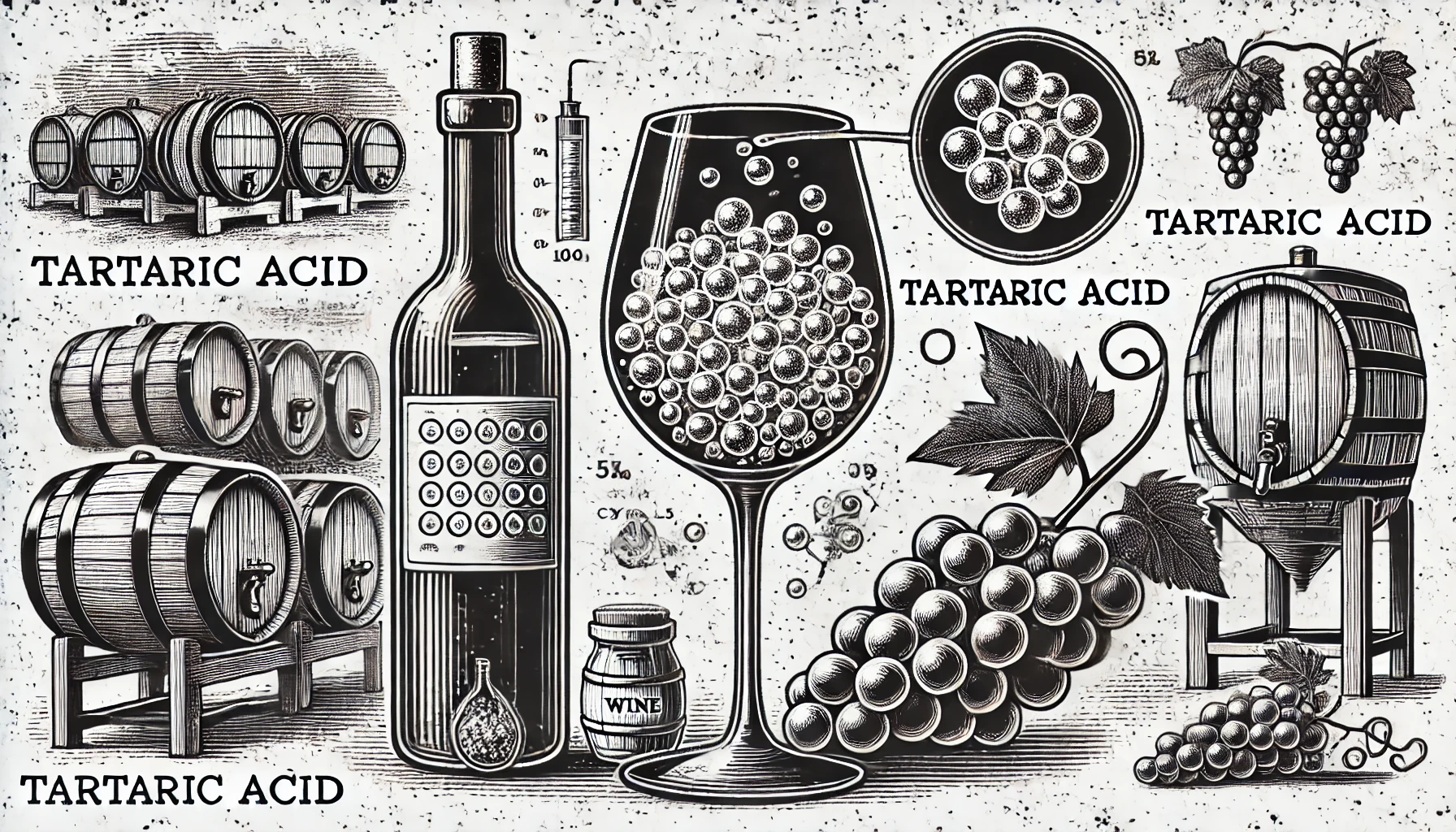
Tartaric Acid is the most important acid found in grapes and is responsible for giving wine its characteristic tartness. It plays a crucial role in balancing the flavors of wine by contributing to its overall structure, freshness, and stability. Without sufficient acidity, wine would taste flat and lack vibrancy.
Tartaric acid is unique to grapes, and while other fruits contain acids like citric or malic acid, tartaric acid is the dominant acid in winemaking. It helps preserve the wine during aging by maintaining a stable pH level, which is crucial for preventing spoilage and encouraging proper fermentation. It also interacts with other acids in the wine, enhancing the wine’s aroma and flavor while providing a crisp, clean finish.
During the winemaking process, some of it may crystallize and form small, harmless crystals known as “wine diamonds” or tartrates. These can often be seen on the cork or at the bottom of the bottle, especially when the wine has been chilled. These crystals are natural and don’t affect the quality of the wine, though some winemakers use cold stabilization techniques to remove excess tartaric acid before bottling.
Tartaric acid plays a key role in balancing the sugar levels in both red and white wines, helping to create a refreshing mouthfeel and lively taste. The presence and management of it influence the style of wine, from zesty, high-acid whites to rich, well-balanced reds.
Curious about more wine terms and insights? Visit our Wine Wiki section and explore the basic wine terms for expert definitions and tips!